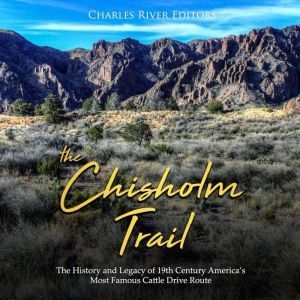
List: $6.95
| Sale: $4.87
Club: $3.47
Chisholm Trail, The: The History and Legacy of 19th Century America's Most Famous Cattle Drive Route
Author: Charles River Editors
Narrator: Bill Hare
Unabridged: 1 hr 48 min
Format: Digital Audiobook Download
Publisher: Findaway Voices
Published: 11/12/2019
Category: History - United States - 19th Century
Synopsis
Around the time that the Civil War ended in 1865, the open ranges of south Texas were full of the cattle, known as longhorns. Hundreds of thousands of the distinctive steer, with their horns spanning as much as seven feet from tip to tip, roamed free on the range, so cattle ranchers took advantage of the bounty and claimed the wild longhorns as their own. With a beef shortage on the East Coast, the demand for cattle was high, so the ranchers just needed to get the cattle north from Texas to the nearest railroad.Tennessee native Jesse Chisholm was a trader, not a cattleman, but the trail he blazed from his trading post in Wichita, Kansas to the Red River in Texas became crucial to cattle drivers. The trail was straight, with few river crossing and no large hills to navigate, and in some spots it was over 400 yards wide. This made the Chisholm Trail ideal for both trade wagons and driving cattle. Between 1867 and 1872, over one million head of cattle were herded from Texas to Kansas, where they were then loaded onto a train and shipped east.In due time, cattle drives became a hallmark sight of the West, and they’ve frequently been depicted in modern media alongside typical Western images such as cowboys, saloons, mining towns, and Native Americans. Thus, even as the existence of paths like the Chisholm Trail proved brief, the Chisholm Trail provided a vital link in the cattle industry in a pivotal point in American history, ensuring it remains intimately associated with the legends of the Old West.The Chisholm Trail: The History and Legacy of 19th Century America’s Most Famous Cattle Drive Route examines how the various paths were forged, the people most responsible for them, and the most famous events associated with the trail’s history.